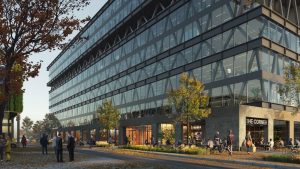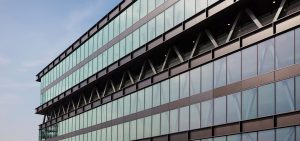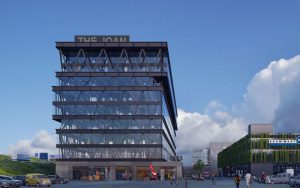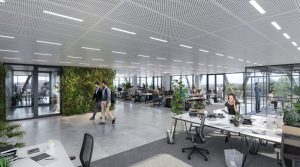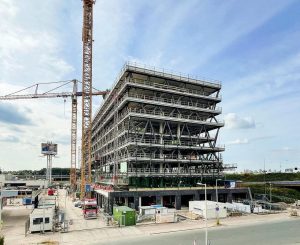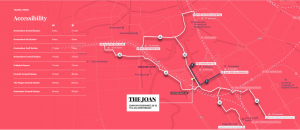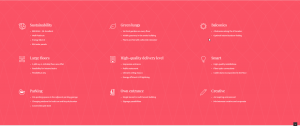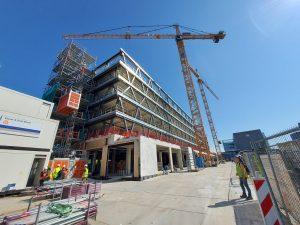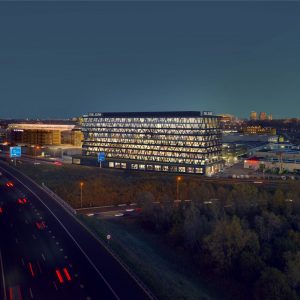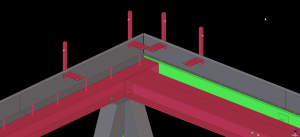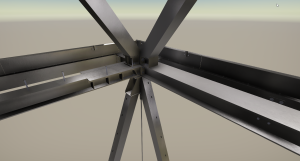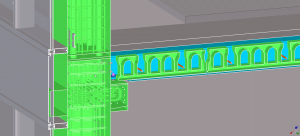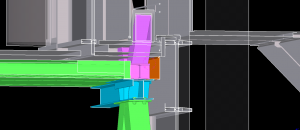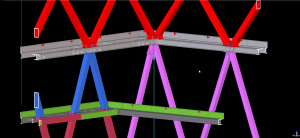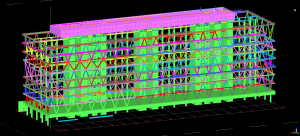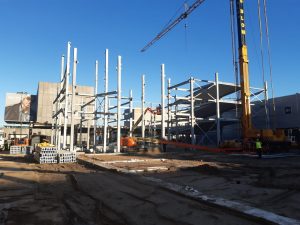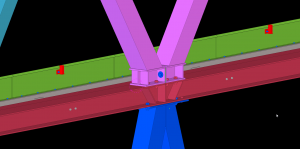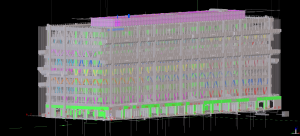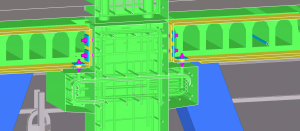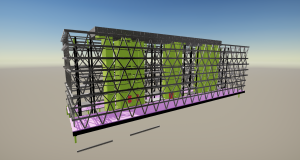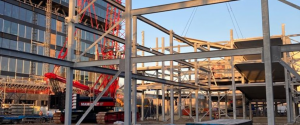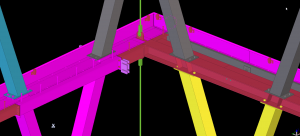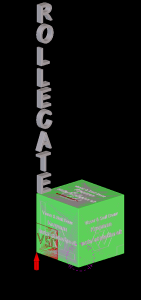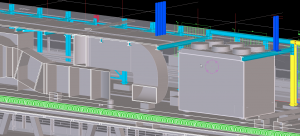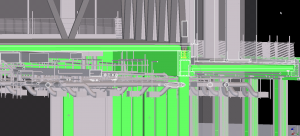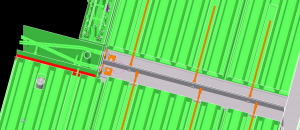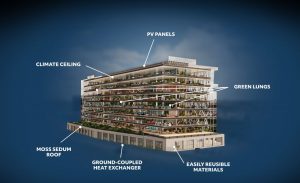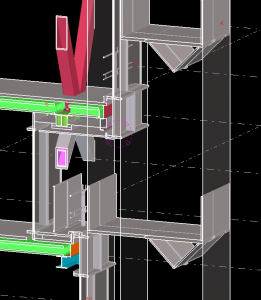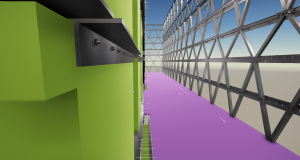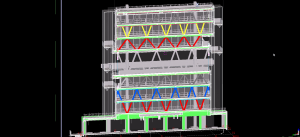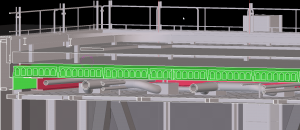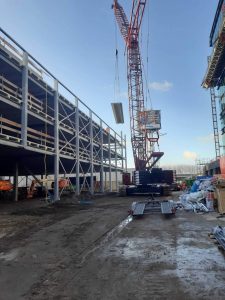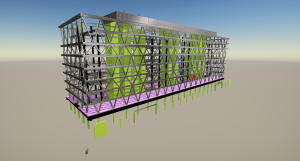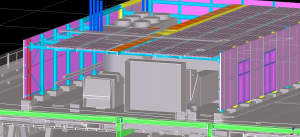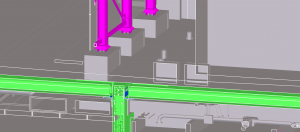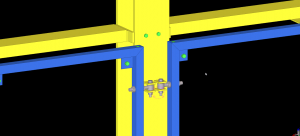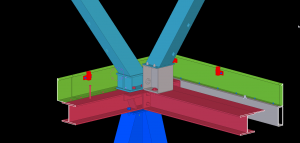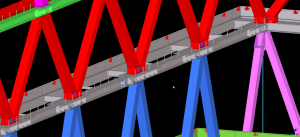 Zwycięzca kategorii w krajach:
Zwycięzca kategorii w krajach:
The Joan
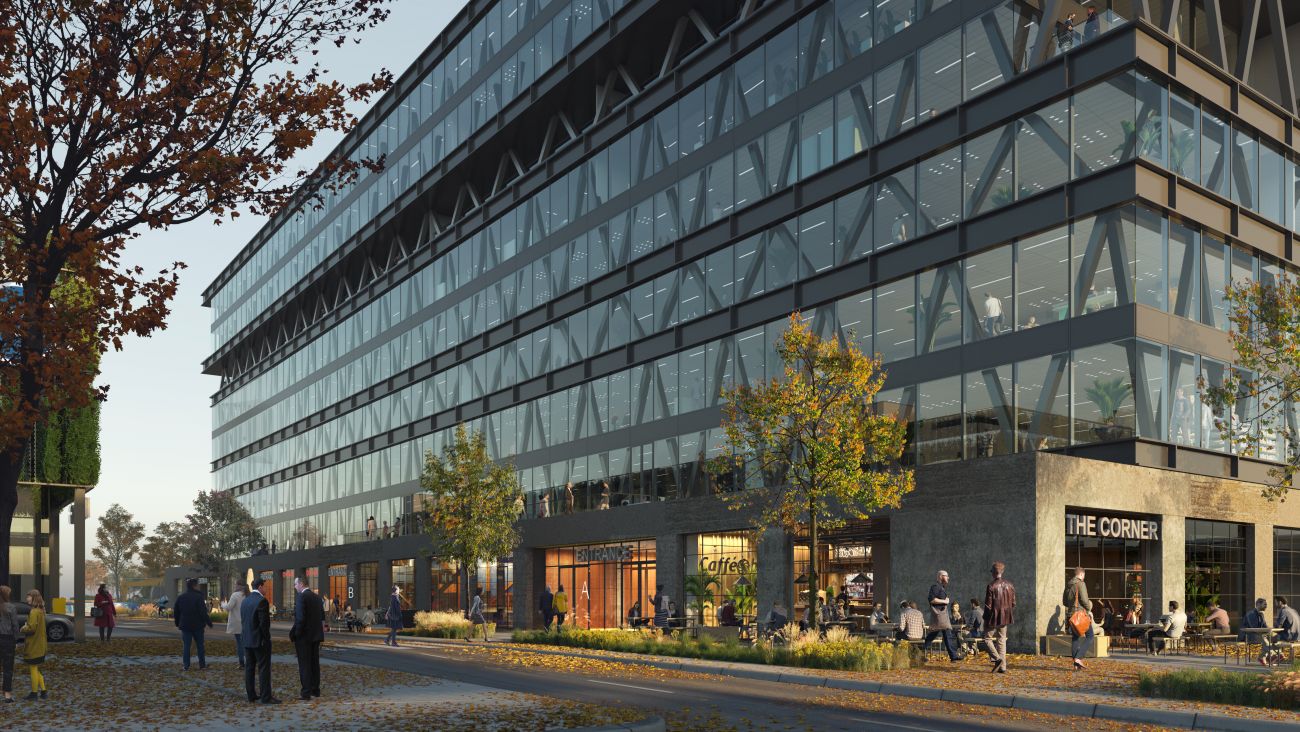
| Kategoria | Projekty komercyjne |
|---|---|
| Rok | 2022 |
| Kraj | Benelux |
| Organizacja | Voortman Steel Construction |
| Partnerzy projektu | Rollecate geveltechniek, Kropman Installatietechniek B.V., VBI prefab vloersystemen, Westo Prefab Betyonsystemen |
| Autor | Coen Boerman |
| Współautorzy | Andre Robers |
| Klient | Visser & Smit Bouw |
| Miejsce budowy | Amsterdam-Zuid |
| Tags |
– Locatie: Joan Muyskenweg 28–32, Amsterdam
– Omvang: 24.000 m2
– Contractvorm The Joan I en II: Design & Construct
– Start bouw: begin oktober 2020
– Hoogste punt: september 2021
– Oplevering: begin 2022
– Opdracht: Being
– Vastgoedbelegging: Cromwell Property Group
– Architectuur: OZ architecten
– Constructief ontwerp en advies duurzaamheid, brandveiligheid, bouwfysica en installatietechniek: Arcadis
– Projectmanagement en kostenadvies: Drees & Sommer
– Hoofduitvoering: Visser & Smit Bouw en Kropman Installatietechniek
– Staalconstructies en kanaalplaatvloeren: Voortman Steel Construction
– Bouwpartners: Rollecate geveltechniek, Kropman Installatietechniek B.V., VBI prefab vloersystemen, Westo Prefab Betyonsystemen
Wegbereider voor duurzame werkstad
Opvallend, uitnodigend, inspirerend, multifunctioneel, flexibel, gezond en bijzonder duurzaam. Met deze karakteristieken vervult kantoor- en bedrijfsverzamelgebouw The Joan I de voortrekkersrol en voorbeeldfunctie voor de verdere toekomstige bebouwing van Werkstad OverAmstel, de herontwikkeling van het bestaande Amstel Business Park in Amsterdam-Zuid. The Joan I beschikt over 24.000 m2 kantoor-, bedrijfs- en publieksruimten. Met ruime parkeergelegenheid in het naburige parkeerhuis The Joan II. Het ontwerp van het gebouwenpaar komt op naam van OZ architecten. De transparantie, openheid, flexibiliteit en duurzaamheid van het pand worden gefaciliteerd door de skeletvormige draagconstructie met kanaalplaatvloeren en ruimtelijke vakwerken in de gevelzones.
Deelgemeente Ouder-Amstel wil het monofunctionele en ietwat verstilde Amstel Business Park in Amsterdam Zuid de komende jaren veranderen in een levendige, multifunctionele en toekomstbestendige ‘Werkstad OverAmstel’. Het gebied, ingeklemd tussen de A10 en de A2, is voorbestemd als ‘the place to be’ voor een rijke schakering aan bedrijven en organisaties uit tal van bedrijfstakken, van IT & multimedia en mobiliteit & logistiek tot food & hospitality en fashion & design. Met zo’n pluriforme populatie is de werkstad dan de plek om met elkaar te creëren, innoveren en produceren, maar dan wel graag op een duurzame en gezonde manier.
Voor de implementatie van deze visie in de praktijk werkt The Joan I als ambassadeur. Als een van de eerste nieuwbouwprojecten in het kader van de gebiedstransformatie, laat het negenlaagse gebouw zien hoe je werk, comfort, gezondheid en duurzaamheid effectief combineert. De transparante huid van het gebouw en hoge plafonds zorgen voor een ruime toetreding van daglicht en een riant uitzicht over de omgeving. Door de verdiepingen ten opzichte van elkaar te verschuiven, ontstaat op elke laag aan de ene zijde een geriefelijke binnen-buitenruimte en aan de tegenoverliggende zijde een overstek dat de bouwmassa een geleding meegeeft. Rond de liften en trappenhuizen is, doorlopend over de verdiepingen, echte beplanting aangebracht. Behalve deze ‘groene longen’ heeft het gebouw klimaatplafonds, een met sedum bedekt dak, een WKO-installatie en pv-panelen op het dak voor de duurzame energievoorziening.
The Joan I is voorbereid op verandering van gebruik en functies. De verdiepingen, elk zo’n 2.600 m2 groot, zijn geheel naar wens van huurders in te delen. Dat kan zowel horizontaal als verticaal; ook het verbinden van twee verdiepingen via een nieuwe inpandige trap behoort tot de flexibele mogelijkheden. Al direct vanaf de oplevering is het gebouw multifunctioneel. Van het totaal van 24.000 m2 is zo’n 10.000 m2 bestemd voor kantoren, circa 12.500 m2 gaat fungeren als werkplaats of atelier voor bedrijven in de creatieve industrie en zo’n 4.000 m2 dient als vergadervoorziening. In de plint komt een openbaar toegankelijke horecagelegenheid van zo’n 500 m2, een uitnodigende ontmoetingsplek voor ontspanning en interactie.
Duurzame en gezonde werkomgeving
In The Joan I staan gezondheid en comfort voorop. Het ontwerp van de hand van architectenbureau OZ kenmerkt zich door de glazen gevel met stalen kruizen en een open uitstraling. De toepassing van veel glas in de gevel zorgt voor veel natuurlijke lichtinval en een wijds uitzicht naar buiten. Iedere verdieping is voorzien van levende verticale begroeiing, die wordt gevoed met opgevangen regenwater. Deze 'groene longen’ bevorderen het welzijn en de productiviteit van gebruikers. The Joan I speelt in op de toenemende vraag naar een duurzame en gezonde werkomgeving op een goed bereikbare locatie.
The Joan II
Tegenover The Joan I is een efficiënt en stijlvol parkeerhuis gerealiseerd, The Joan II. Het ontwerp hiervan sluit naadloos aan op de openbare ruimte en de architectuur van The Joan I. Zo wordt het gebouw voorzien van een groene gevel, door een draadnet te spannen waartegen plantenbakken met veel groen komen. De installaties van het drie verdiepingen tellende parkeerhuis worden volledig gevoed vanuit de duurzame (hoofd)installatie van The Joan I. Dit parkeerhuis van circa 11.000 m2 biedt 376 plaatsen voor auto’s en 155 voor fietsen, verdeeld over de drie bovengrondse bouwlagen. De installaties van de Joan II worden volledig gevoed door de (duurzame) hoofdinstallatie van The Joan II.
Pilot
Voor dit project kwam Visser & Smit Bouw met een nieuwe ontwikkeling. In het kader van efficiënter bouwen en het reduceren van overbodige werkzaamheden bedachten zij dat het mogelijk moet kunnen zijn om een project te realiseren zonder gebruik te maken van 2D-tekenwerk, als tegelijkertijd het 3D-model van voldoende kwaliteit en niveau is. Om dit stapsgewijs te gaan ontdekken hebben zij een pilot bedacht die is toegepast op JOAN I. Dit betekende concreet:
– Wij hebben, zoals op elk project, een materiaalcontainer in het werk op de bouwplaats staan. Deze is centraal geplaatst en verhuist mee met elke verdieping.
– In de materiaalcontainer, die meeverhuisde met elke verdieping, werd een PC geplaatst waarop het Solibri-model (in afgeslankte vorm) beschikbaar was.
– De voormannen van Visser & Smit zijn getraind in het gebruik van Solibri om het model te kunnen bedienen en de materiaalcontainer te voorzien van simpele instructiekaarten voor het gebruik van de software.
– De voormannen werkten aan de hand van (goedgekeurde) modellen. Zij moesten zelf informatie halen uit het model, de maten opmeten en zelf doorsnedes maken.
– De modellen werden goedgekeurd door de werkvoorbereiding en vastgelegd in een apart Excel-document, zodat altijd duidelijk is welk model, door wie, op welk moment is vrijgegeven en voor welke onderdelen.
– Als back-up had de hoofduitvoerder wel de (door de klant) goedgekeurde tekeningen in de keet beschikbaar, zodat wanneer gegevens uit het model niet toereikend waren, toch de juiste onderdelen gerealiseerd konden worden. Dit alles werd op tweewekelijkse basis gemonitord. Het uiteindelijke doel van deze pilot was om op toekomstige projecten toe te werken naar ‘tekeningloos’ bouwen, zodat de tekening helemaal niet meer gemaakt hoeft te worden.
BIM toepassingen:
– Data-uitwisseling middels IFC, BCF en bronbestanden in het kader van de Open-BIM werkwijze.
– Issue Management Systeem BIMcollab.
– Uitwisselingsplatform Docstream.
– Sparingsopgave dient te geschieden volgens de USO.
– Verantwoordelijkheden volgens demarcatie.
– Vereiste data volgens BIM Uitvoeringsplan.
– NL-SfB codering.
– Interne modelvalidatie met solibri.
www.thejoan.nl, www.being.nl/projects/the-joan, www.visserensmitbouw.nl/nl/projecten/detail/the-joan, www.vsc.nl/nieuws-and-events/253/breed-pakket-aan-werkzaamheden-voor-parkeergarage-the-joan, www.vsc.nl/nieuws-and-events/211/the-joan-een-modern-en-multifunctioneel-kantoorgebouw, www.dreso.com/nl/projecten/details/the-joan-amsterdam, www.ozarchitect.nl/projects/the-joan/, www.ezpark.nl/nieuws/details/start-bouw-parkeergarage-the-joan-ii-amsterdam/id=143, www.ezpark.nl/nieuws/details/werkzaamheden-the-joan-ii-in-volle-gang/id=173, www.joan.timeboxview.com/
– Location: Joan Muyskenweg 28-32, Amsterdam
– Size: 24,000 m2
– Contract form The Joan I and II: Design & Construct
– Construction starts: early October 2020
– Highest point: September 2021
– Completion: early 2022
– Assignment: Being
– Investment property: Cromwell Property Group
– Architecture: OZ architecten
– Structural design and advice on sustainability, fire safety, building physics and installation technology: Arcadis
– Project management and cost consultancy: Drees & Sommer
– Main construction: Visser & Smit Bouw en Kropman Installatietechniek
– Steel structures and hollow-core floors: Voortman Steel Construction
– Construction partners: Rollecate geveltechniek, Kropman Installatietechniek B.V., VBI prefab vloersystemen, Westo Prefab Betyonsystemen
Paving the way for a sustainable working city
Striking, inviting, inspiring, multifunctional, flexible, healthy and particularly sustainable. With these characteristics, the office and multi-company building The Joan I fulfills the pioneering role and exemplary function for the further future development of Werkstad OverAmstel, the redevelopment of the existing Amstel Business Park in Amsterdam South. The Joan I has 24,000 m2 of office, business and public space. With ample parking in the neighboring car park The Joan II. The design of the pair of buildings is in the name of OZ architects. The transparency, openness, flexibility and sustainability of the building are facilitated by the skeleton-shaped supporting structure with hollow-core slab floors and spatial trusses in the facade zones.
The district of Ouder-Amstel wants to change the monofunctional and somewhat quiet Amstel Business Park in Amsterdam South in the coming years into a lively, multifunctional and future-proof 'Working City OverAmstel’. The area, sandwiched between the A10 and the A2, is destined to be 'the place to be’ for a rich variety of companies and organizations from numerous industries, from IT & multimedia and mobility & logistics to food & hospitality and fashion & design. With such a diverse population, the working city is the place to create, innovate and produce together, but preferably in a sustainable and healthy way.
The Joan I works as an ambassador for the implementation of this vision in practice. As one of the first new construction projects in the context of the area transformation, the nine-storey building shows how you can effectively combine work, comfort, health and sustainability. The transparent skin of the building and high ceilings provide ample daylight and a splendid view of the surroundings. By shifting the floors relative to each other, a comfortable indoor-outdoor space is created on each layer on one side and an overhang on the opposite side that gives the building mass an articulation. Real vegetation has been applied around the lifts and stairwells, continuously over the floors. In addition to these 'green lungs’, the building has climate ceilings, a roof covered with sedum, a thermal storage system and PV panels on the roof for sustainable energy supply.
The Joan I is prepared for changes in use and functions. The floors, each about 2,600 m2, can be arranged entirely according to the wishes of the tenants. This can be done both horizontally and vertically; connecting two floors via a new indoor staircase is also one of the flexible options. The building is multifunctional right from the moment of completion. Of the total of 24,000 m2, about 10,000 m2 is intended for offices, about 12,500 m2 will function as a workshop or studio for companies in the creative industry and about 4,000 m2 will serve as meeting facilities. In the plinth will house a publicly accessible catering facility of approximately 500 m2, an inviting meeting place for relaxation and interaction.
Sustainable and healthy working environment
In The Joan I, health and comfort are paramount. The design by the architectural firm OZ is characterized by the glass facade with steel crosses and an open appearance. The use of a lot of glass in the facade ensures a lot of natural light and a wide view to the outside. Each floor has living vertical vegetation, which is fed with collected rainwater. These 'green lungs’ promote the well-being and productivity of users. The Joan I responds to the increasing demand for a sustainable and healthy working environment in an easily accessible location.
The Joan II
Opposite The Joan I, an efficient and stylish parking house has been realized, The Joan II. The design of this fits seamlessly with the public space and architecture of The Joan I. For example, the building is provided with a green facade, by stretching a wire net against which planters with lots of greenery are placed. The installations of the three-storey parking house are fully fed from the sustainable (main) installation of The Joan I. This parking house of approximately 11,000 m2 offers 376 places for cars and 155 for bicycles, spread over the three above-ground floors. The installations of the Joan II are fully fed by the (sustainable) main installation of The Joan II.
Pilot
Visser & Smit Bouw came up with a new development for this project. In the context of building more efficiently and reducing unnecessary work, they thought that it should be possible to realize a project without using 2D drawings, if at the same time the 3D model is of sufficient quality and level. In order to discover this step by step, they devised a pilot that was applied to JOAN I. In concrete terms, this meant:
– As on any project, we have a material container at work on the construction site. This is centrally placed and moves with each floor.
– In the material container, which moved along with each floor, a PC was placed on which the Solibri model (in slimmed-down form) was available.
– The Visser & Smit foremen were trained in the use of Solibri to operate the model and provided the material container with simple instruction cards for using the software.
– The foremen worked on the basis of (approved) models. They had to extract information from the model, measure the dimensions and make cross-sections themselves.
– The models were approved by the work preparation department and recorded in a separate Excel document, so that it is always clear which model was released, by whom, at which time and for which parts.
– As a back-up, the chief executive officer had the drawings (approved by the customer) available in the shed, so that if data from the model were insufficient, the correct parts could still be realised. All this was monitored on a fortnightly basis. The ultimate goal of this pilot was to work towards 'drawingless’ construction on future projects, so that the drawing would no longer have to be made at all.
BIM applications:
– Data exchange using IFC, BCF and source files within the framework of the Open BIM method.
– Issue Management System BIMcollab.
– Docstream exchange platform.
– Spare parts calculations must be made in accordance with the USO.
– Responsibilities according to demarcation.
– Required data according to BIM Execution Plan.
– NL-SfB coding.
– Internal model validation with solibri.
